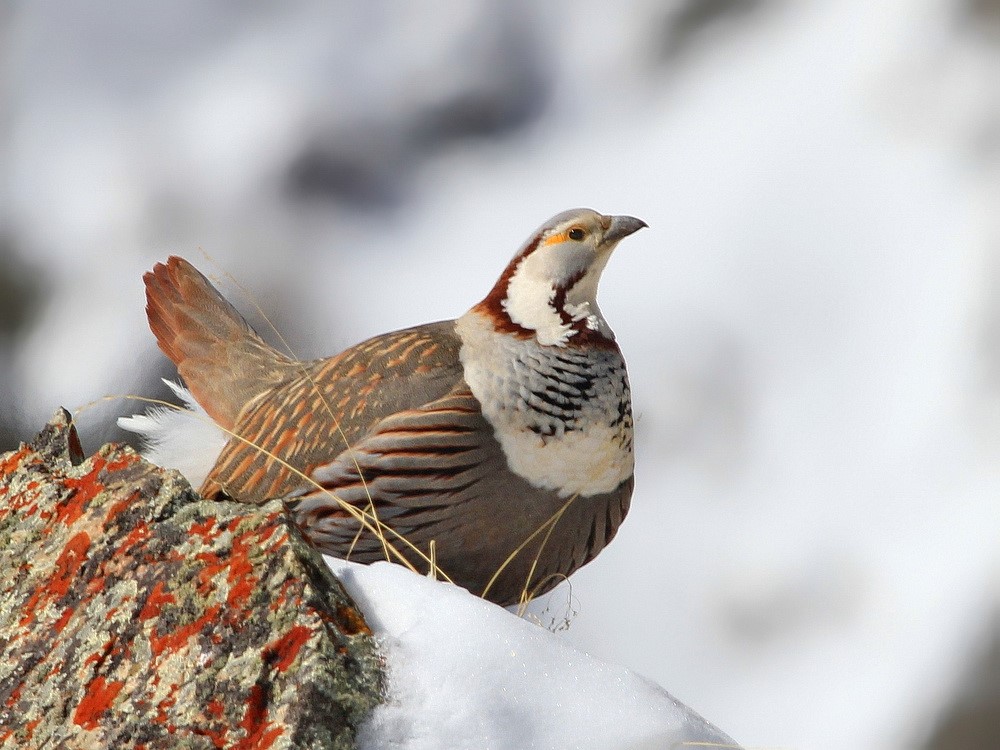Birdfinding.info ⇒ Occupies remote alpine regions where access is difficult, and it appears to be generally common, but shy and usually observed only with great effort. Areas where its habitat can be reached by road include: the Big Almaty Lake area of Ile-Alatau National Park in Kazakhstan; Leh in Kashmir; the villages of Udaipur, Chicham, and Kibber in Himachal Pradesh; and Muktinath in Nepal. In Nevada, the most accessible site is Lamoille Canyon, especially the hills above Island Lake.
Himalayan Snowcock
Tetraogallus himalayensis
Mountains of central Asia, on rocky alpine slopes and meadows, mainly between 2,000 and 6,000 m elevation.
Inhabits most of the major mountain ranges of central Asia: in eastern Kazakhstan, Kyrgyzstan, and western Xinjiang, the Tarbagatai, Dzungarian Ala Tau, and Tien Shan; in northeastern Afghanistan and Tajikistan, the Hindu Kush and adjacent ranges; from southern Xinjiang to Gansu, the Kunlun, Astin Tagh, Nan Shan, and Koko Nor; and the Himalayas from northern Pakistan to eastern Nepal (to the vicinity of Mount Everest).
An introduced population is established in the Ruby Mountains of northeastern Nevada.
Identification
A very large partridge with a regal appearance. Predominantly gray overall, with white throat and sides of the neck, framed by chestnut streaks.
The upperparts are finely streaked and spotted buff, and the sides have long streaks of chestnut, giving it a “ribbed” appearance. The chest varies from white to gray with black barring.
A patch of bare skin around and behind the eye is chrome-yellow.
The tail is gray with rusty-brown tips, and the vent feathers are long and white.
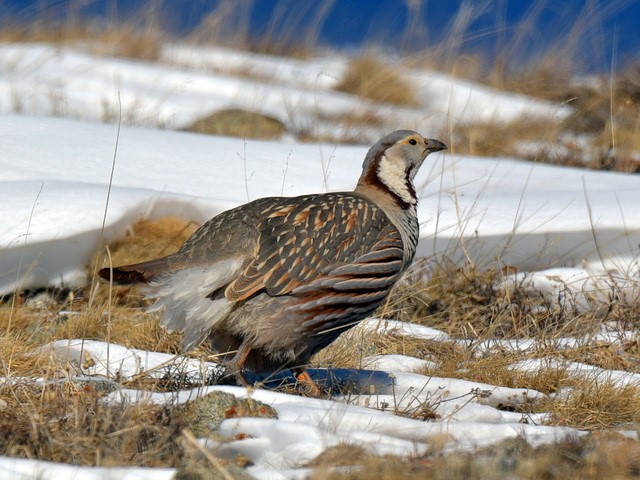
Himalayan Snowcock, T. h. sewerzowi. (Zailiyskiy Alatau, Almaty Oblysy, Kazakhstan; January 13, 2019.) © Gennadiy Dyakin
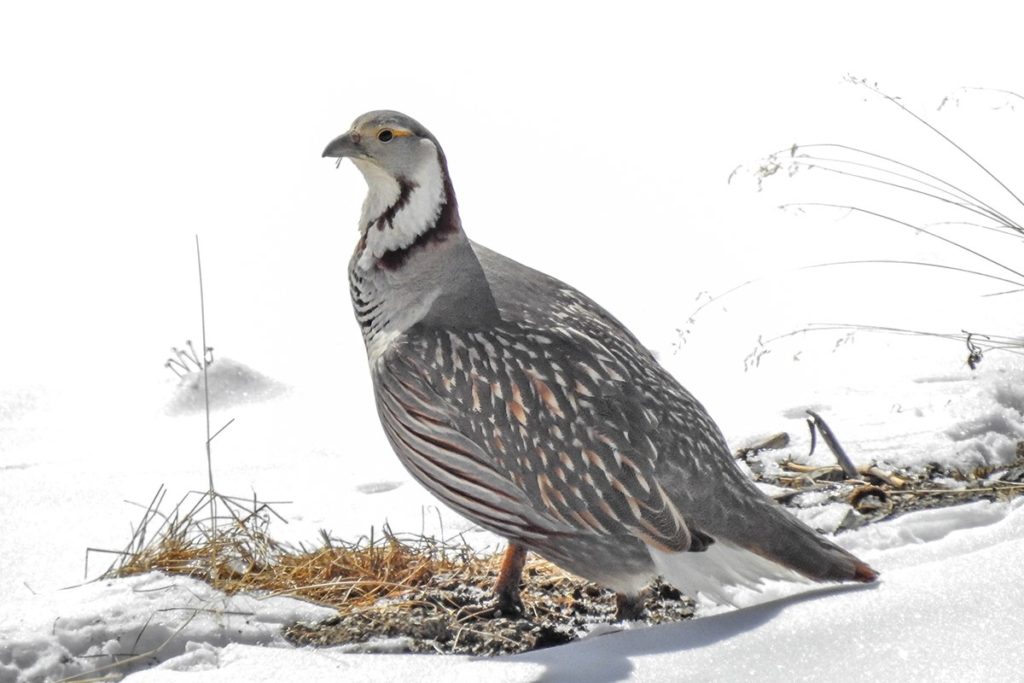
Himalayan Snowcock, T. h. sewerzowi. (Ile-Alatau National Park, Almaty Oblysy, Kazakhstan; February 3, 2019.) © Viktoriya Zvyaginceva

Himalayan Snowcock, T. h. himalayensis. (North Pulu, Ladakh, India; March 25, 2012.) © Subharanjan Sen
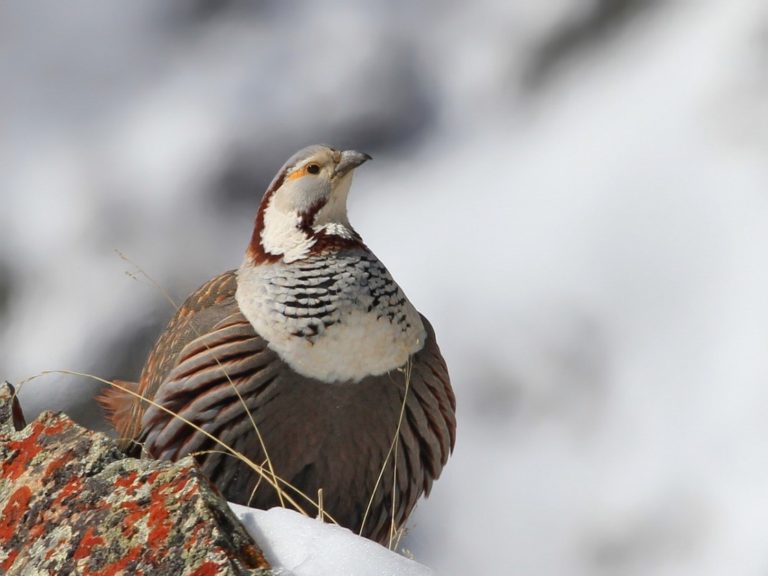
Himalayan Snowcock, T. h. sewerzowi, showing black barring on the chest and rib-like streaking on the sides. (Ile-Alatau National Park, Almaty Oblysy, Kazakhstan; February 3, 2019.) © Askar Isabekov
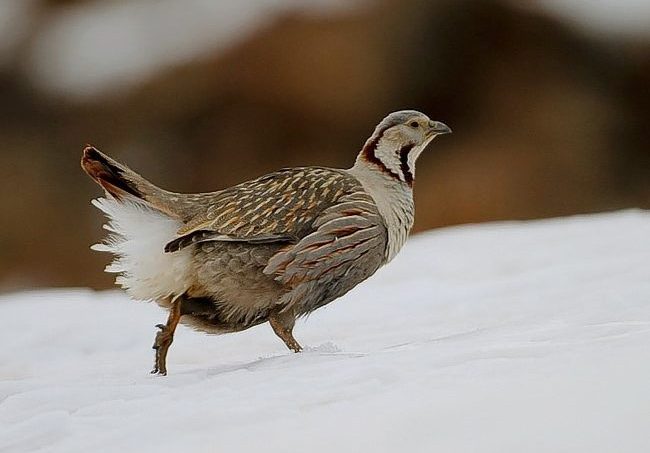
Himalayan Snowcock, T. h. himalayensis, with long, white vent feathers puffed out. (North Pulu, Ladakh, India; March 30, 2012.) © Gobind Sagar Bhardwaj
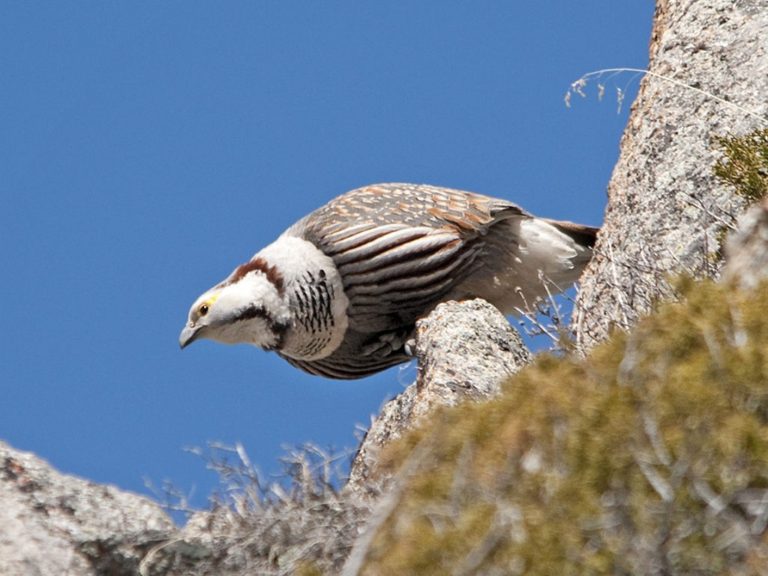
Himalayan Snowcock, T. h. sewerzowi, showing black barring on the chest and rib-like streaking on the sides. (Big Almaty Lake, Almaty Oblysy, Kazakhstan; May 20, 2010.) © Sergey Eliseev

Himalayan Snowcock, T. h. himalayensis, with long, white vent feathers puffed out. (Khuliya Meadows, Munsiyari, Uttarakhand, India; January 1, 2016.) © Gunjan Arora
Subspecies vary somewhat in color saturation and contrast.
Koslowi of central China is especially distinctive: with blurred facial markings, gray cheeks, and variably infused with buffy tones.
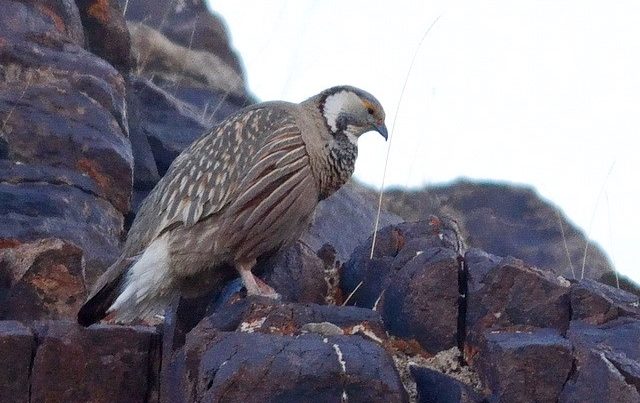
Himalayan Snowcock, T. h. koslowi, showing gray cheeks. (Altun Mountains, Xinjiang, China; May 11, 2014.) © Lee Tao
In flight, the wings show broad white patches on the inner portion of the primaries.
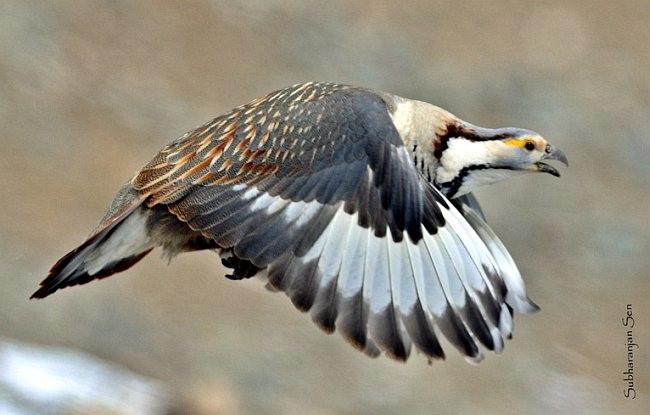
Himalayan Snowcock, T. h. himalayensis, in flight, showing broad white patches on the primaries. (South Pulu, Ladakh, India; March 25, 2012.) © Subharanjan Sen
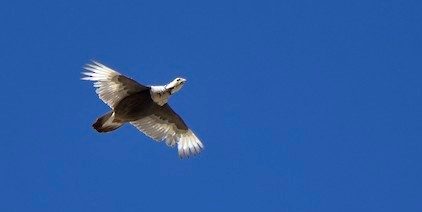
Himalayan Snowcock, T. h. himalayensis, in flight, showing mostly white underwings. (Malling, Kinnaur, Himachal Pradesh, India; June 9, 2019.) © Rajesh Panwar

Himalayan Snowcock, T. h. koslowi, showing gray cheeks and extensively buffy coloration. (Xinjiang, China; May 8, 2014.) © Liang Nigulayi

Himalayan Snowcock, T. h. himalayensis, dorsal view, with wings and tail spread. (Island Lake, Elko County, Nevada; August 22, 2018.) © Bob Friedrichs
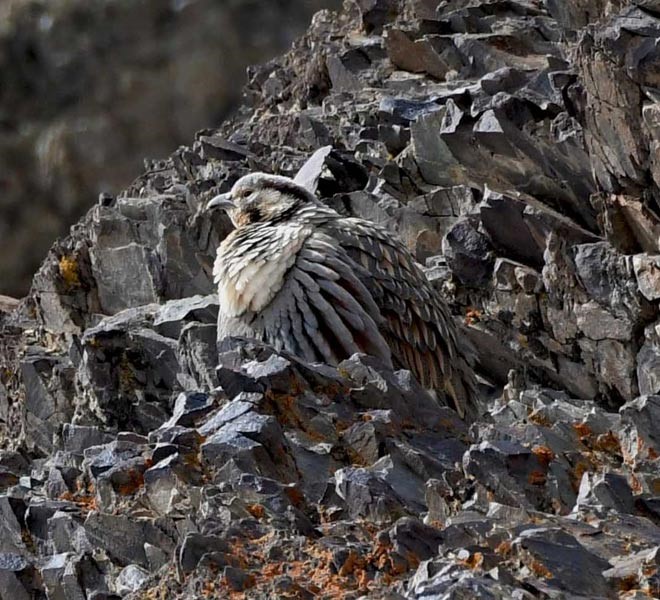
Himalayan Snowcock, T. h. himalayensis, blending into a rocky outcrop. (Rumbak, Ladakh, India; March 7, 2017.) © Alka Vaidya
Voice. Typical call is a far-carrying, drawn-out whistle that rises from one part to the next:
Notes
Polytypic species consisting of six recognized subspecies.
References
Alderfer, J., and J.L. Dunn. 2014. National Geographic Complete Birds of North America (Second Edition). National Geographic Society, Washington, D.C.
BirdLife International. 2018. Tetraogallus himalayensis. The IUCN Red List of Threatened Species 2018: e.T22678673A132049858. https://dx.doi.org/10.2305/IUCN.UK.2018-2.RLTS.T22678673A132049858.en. (Accessed March 28, 2020.)
Birds of Kazakhstan. 2020. Himalayan Snowcock. http://birds.kz/v2taxon.php?l=en&s=149. (Accessed March 28, 2020.)
eBird. 2020. eBird: An online database of bird distribution and abundance. Cornell Lab of Ornithology, Ithaca, N.Y. http://www.ebird.org. (Accessed March 28, 2020.)
Madge, S., and P.J.K. McGowan. 2002. Pheasants, Partridges, and Grouse: A Guide to the Pheasants, Partridges, Quails, Grouse, Guineafowl, Buttonquails, and Sandgrouse of the World. Princeton University Press, Princeton, N.J.
McGowan, P.J.K., and G.M. Kirwan. 2020. Himalayan Snowcock (Tetraogallus himalayensis). In: del Hoyo, J., Elliott, A., Sargatal, J., Christie, D.A. & de Juana, E. (eds.). Handbook of the Birds of the World Alive. Lynx Edicions, Barcelona. https://www.hbw.com/node/53374. (Accessed March 28, 2020.)
Xeno-Canto. 2020. Himalayan Snowcock – Tetraogallus himalayensis. https://www.xeno-canto.org/species/Tetraogallus-himalayensis. (Accessed March 28, 2020.)
